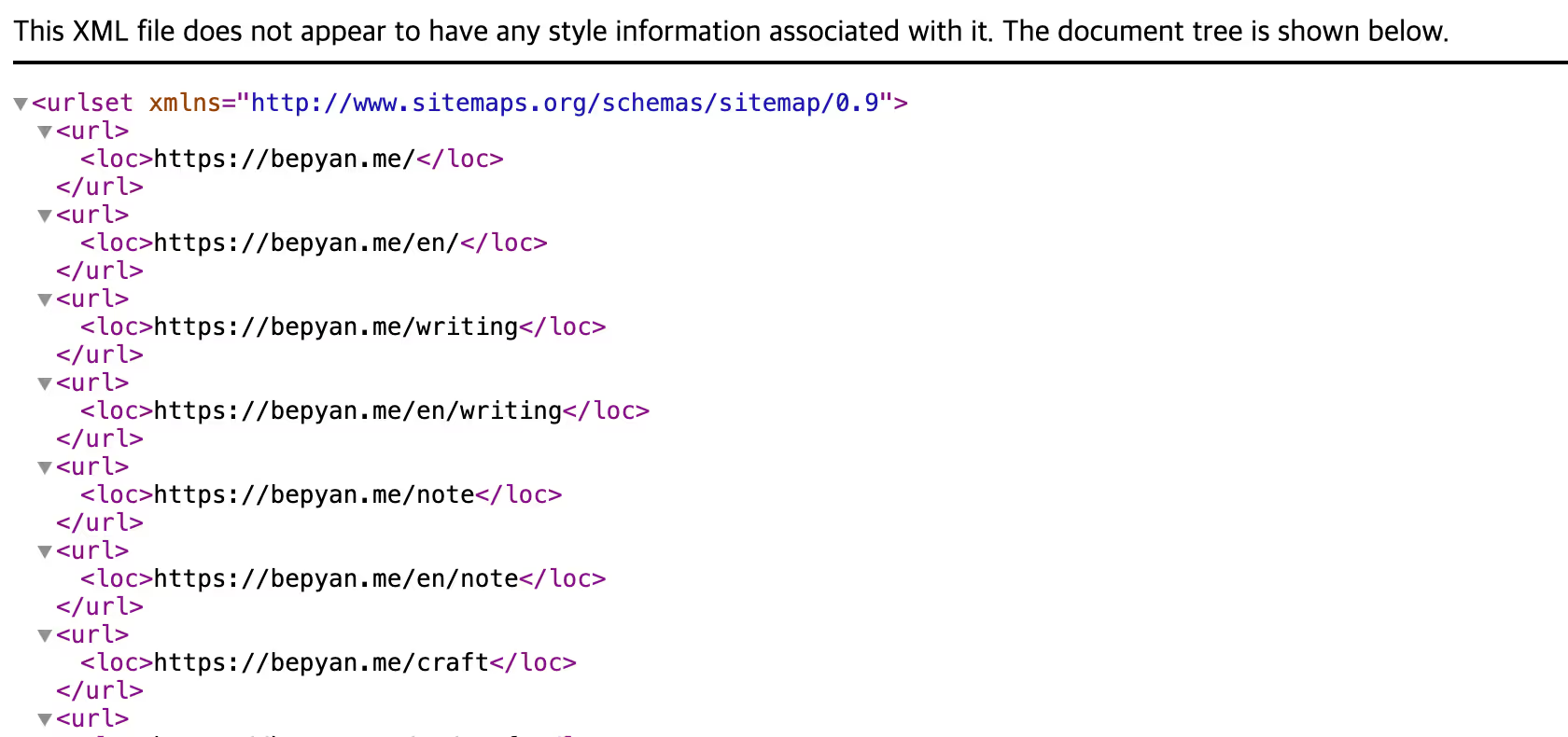A Sitemap assists search engines in easily crawling a website by designating its pages.
Astro provides a handy plugin @astrojs/sitemap to generate your sitemap.
However, you may not want a Sitemap Index (a sitemap that lists sub-sitemaps) created by @astrojs/sitemap, or you may want to handle the sitemap yourself.
In this post, I will explain how to create a direct sitemap in Astro.
Responding /sitemap.xml
In Astro, you can respond in XML format using a Response object as follows.
export async function GET() {
let result = '';
return new Response(result, {
headers: {
'Content-Type': 'application/xml',
},
});
}tsHow to write a sitemap
Now all you need to do is write the content of the sitemap.
The most basic sitemap markup format is as follows. It’s quite intuitive, isn’t it?
<?xml version="1.0" encoding="UTF-8"?>
<urlset xmlns="http://www.sitemaps.org/schemas/sitemap/0.9">
<url>
<loc>https://bepyan.me/</loc>
</url>
</urlset>xmlAll blog post links should also be entered in this format.
Here, you can add the <lastmode> tag to allow the bot to prioritize the crawling of changed pages.
import { getCollection } from 'astro:content';
export async function GET() {
const siteUrl = import.meta.env.SITE;
const posts = await getCollection('post');
const result = `
<?xml version="1.0" encoding="UTF-8"?>
<urlset xmlns="http://www.sitemaps.org/schemas/sitemap/0.9">
<url><loc>${siteUrl}/</loc></url>
<url><loc>${siteUrl}/posts/</loc></url>
${posts
.map((post) => {
const lastMod = (post.data.updatedDate ?? post.data.date).toISOString();
return `<url><loc>${siteUrl}${post.slug}/</loc><lastmod>${lastMod}</lastmod></url>`;
})
.join('\n')}
</urlset>
`.trim();
return new Response(result, {
headers: {
'Content-Type': 'application/xml',
},
});
}tsWhat is good to apply additionally
You can add related meta information to the site so that the crawler can easily detect the sitemap.
<head>
<link rel="sitemap" href="/sitemap.xml" />
</head>htmlUser-agent: *
Allow: /
Sitemap: https://bepyan.me/sitemap.xmltxtIn Conclusion
After the work, access the http://localhost:4321/sitemap.xml path and check if the browser displays XML as shown in the image below.

If you want to know more about sitemaps, please refer to the link below.
https://support.google.com/webmasters/answer/7451001